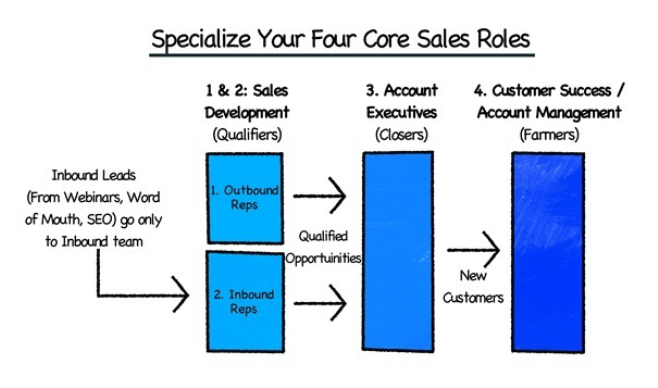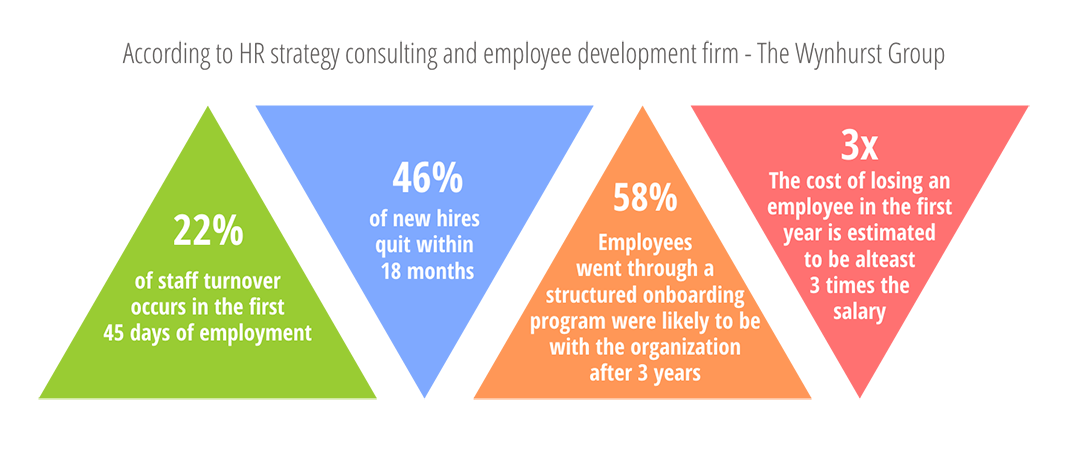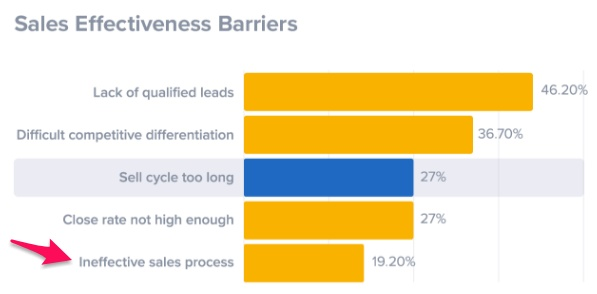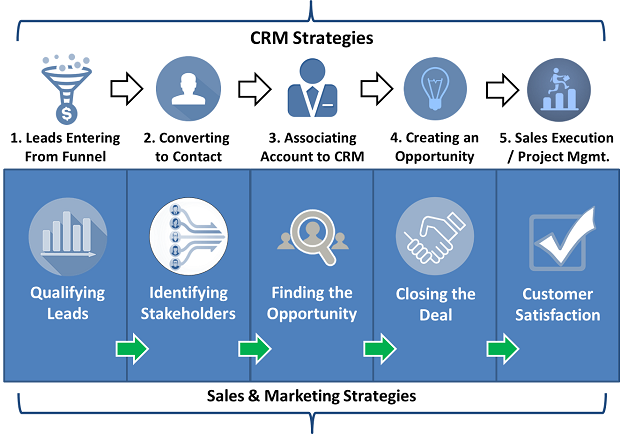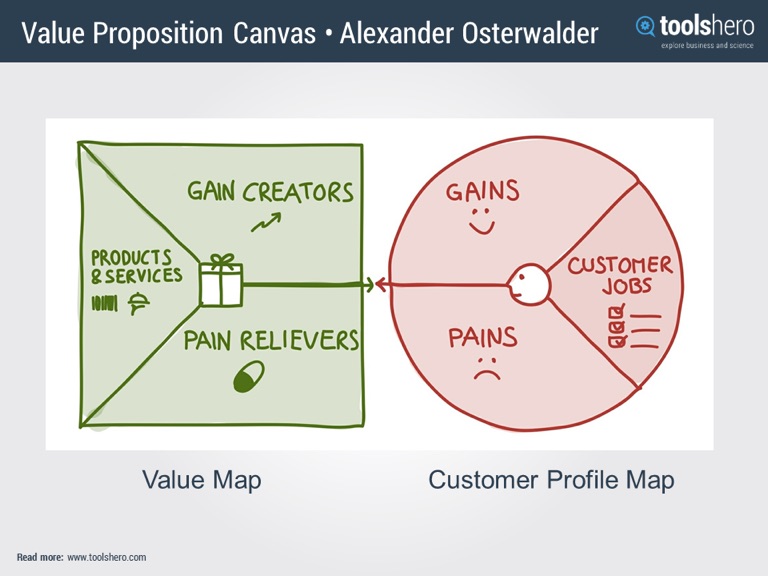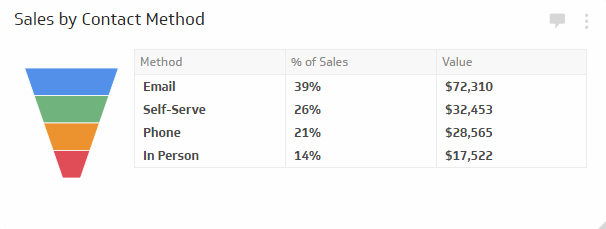Managing a sales team is no easy task. You have the potential to either make or break your sales reps.
And there’s tons of conflicting information out there.
Effective sales managers recruit top sales leaders, provide them with the tools they need to bring in sales and watch the numbers grow.
But it isn’t always as simple as that.
Sales managers can either inspire their teams and help them reach their goals or crush their morale, which leads to a decrease in your company’s profitability.
It can be hard to know what your sales team truly needs from you to hit their goals, make profits, and drive sales.
That’s why we’ve compiled these strategies to help you run a killer sales team in 2018.
Running a Sales Team: It’s a Big Challenge
Running a sales team is hard work.
It’s not always easy to find a balance between encouraging quality performance and pushing sales reps with new goals.
As a sales manager, your success depends on your team’s ability to meet performance goals. But sometimes, it’s hard to control and motivate reps.
Luckily, there are a few steps you can take to motivate and encourage your team to excel.
After all, your sales reps are the backbone of your business.
The Importance of a Sales Team
Businesses need sales to stay alive in the same way that humans need water.
Without sales, your business will die.
And as common as online sales are becoming, the need for sales reps to pick up the phone is just as important now as it’s ever been.
Building relationships is the key to closing sales. The Internet can’t always build relationships for you. Only a good sales team can do that.
Sales Team Positive Effects
First of all, salespeople understand your target client better than anyone else at your company.
If you know your ideal client, you’re more likely to capture the prospects you want. If you don’t know your ideal client, your prospects won’t have a reason to be interested in you.
If your pitch is dull, dry, or impersonal, you’ll put your prospects to sleep.
Marketers usually have a pretty good idea of who your customers and clients are, but salespeople truly know.
They can even put a name and a face to your prospects with customer avatars.
Without a sales team, the marketing team wouldn’t have a detailed description of ideal clients to use for targeting them more effectively.
No one knows your ideal clients better than the people who spend all day talking to them.
They understand their questions, concerns, thought processes, and more.
And the top source of sales for sales organizations is – you guessed it – leads that the sales teams source.
Salespeople generate qualified leads even better than the marketing team.
That’s why leveraging their knowledge and customer know-how will help your marketing efforts.
Your sales team is with your clients every step of the way through the buying process, so they can help the marketing team target the right people.
They talk to your clients through the entire sales funnel.
Today’s buying process isn’t always as linear as a simple sales funnel. And salespeople know that. They understand the particular sales funnel model that applies to your business.
This is important because satisfied customers tell an average of nine people about how happy they are with their experience. Dissatisfied ones, on the other hand, tell an average of 22 people about how unhappy they are with their experience.
Salespeople make the customer experience smooth and enjoyable.
They sell your product to real people with real concerns, questions, and objections. That’s why you need them to perform at their best.
There are two basic sales team structures that you can use to up your sales game.
Sales Team Models
Effective sales processes can’t exist without effective sales team models in place.
The two basic sales team models to keep in mind are:
- The island
- The assembly line
Let’s analyze the island model first.
The island
This old-school model structures out the responsibilities for sales all reps.
It says that every sales rep is fully responsible for every step within the sales process – from generating leads to finalizing deals.
This model is simple and encourages sales rep independence.
The assembly line model is a bit more complicated.
The assembly line
With the assembly line model, there are four different groups that share different responsibilities:
- The leads generation team
- The sales development representatives (SDRs)
- The account executives (AEs)
- The customer success team
Each group deals with a different kind of lead or customer.
The first and second groups reach out and qualify leads. The third team closes the deals. The last team then deals with increasing customer lifetime value (CLV).
How do you know which one model best for your team?
Takeaway
If you’re a startup, the island model probably isn’t best for your business. It’s competitive and aggressive.
If you’re in an established market, the island model could work for you.
The assembly line model reduces the complexity of your sales cycle, boosts efficiency, and scales your team.
With this model, one rep isn’t responsible for every stage of the buying cycle.
Once you choose a model that works best for your goals, here’s how you can manage your sales team effectively.
How to Manage a Sales Team Effectively
A good sales team model goes a long way. But you still have to do your part to keep your team in check.
Find and hire the best workers
If you aren’t finding and hiring good workers, you won’t see any success.
Worry less about company culture and more about background and reference checks, assessment results, and how the interview goes.
According to CPSA, there are five key qualities of a successful salesperson:
- Empathy
- Focus
- Responsibility
- Optimism
- Ego-drive
Empathy refers to an employee’s ability to identify with customers, put themselves in their shoes, and make them feel respected.
Once a sales rep shows empathy, they can gain the trust of customers without appearing judgmental.
If a sales rep can read customers, show concern, and provide solutions, they’re a winner.
A sales rep with focus has the drive to accomplish their goals and stay on task. They are self-motivated, organized, and don’t need anyone to tell them what to do.
A person with a large sense of responsibility won’t place the blame on someone else when they’re in a difficult scenario. They accept errors, fix mistakes, and move past obstacles quickly.
A salesperson that is optimistic is slow to accept defeat. Failure doesn’t disrupt their positive view of themselves, and they can easily turn situations around.
Ego-drive is similar to optimism, but ego-drive is focused on competitiveness. A person who is ego-driven is self-motivated with clear goals that they want to meet.
Once you’ve selected workers who fit this mold, provide sales training to them.
Provide sales training
58% of employees who go through a structured onboarding program are likely to still be working at an organization after three years.
If your sales team doesn’t know your product like the back of their hand, they’ll fall short when closing a sale.
Make sure that sales reps understand product details and features so that they can effectively answer questions and solve client problems.
For basic sales training and techniques, give Lynda a try.
It has training courses on sales fundamentals that users can access on the go.
Online videos and modules from industry experts make training less of a hassle, and you can track progress to make sure that reps have viewed the training sessions.
Be sure to field train and provide detailed feedback. Listen to sales calls, review recordings, and offer specific feedback to your reps.
You should also set a good team example to boost morale.
Set an example and inspire them
Goals drive salespeople, so achievement-based rewards aren’t a bad idea.
Don’t keep training goals vague and general. Be specific. Tell reps which areas they’re doing a good (or bad) job in and why.
Did they reach a goal by a certain percentage? Tell them about it.
Was their performance amazing on a difficult call? Offer specific examples of what they did right.
If there’s room for improvement, provide a brief, detailed breakdown so that they know exactly what to improve and how to improve it.
Create sales processes that work, but be flexible.
Create sales processes but don’t be stuck to them
Ineffective sales processes are a huge barrier for sales departments.
Many sales reps have proven and documented that having a sales process is effective.
This process acts as an aid to help them meet metrics, convert clients, and close deals.
Emotion is the basis for all sales. Logic comes later. A stuck sale means that there’s no more emotion involved with a client.
Reps have to bring that emotion back into the picture. Hit on a client’s pain points and suggest how your product or service can make their life easier.
Create a model for sales processes, but recognize that every sale and client is going to be different. Don’t be afraid to step out of the box.
Develop powerful strategies
Other strategies are more cut-and-dry and leave less room for creativity.
Powerful sales strategies, such as CRM strategies, keep salespeople on task and bring in results time and time again.
Sell your reps on what they can gain from sales processes.
They can develop stronger skills by sticking to a process, rely on guidance through every step of a sale, and close more deals.
Your sales process works, and your metrics prove that it does. Show your reps the proof, and they’ll be more likely to stick with the script.
Set clear goals so that there aren’t any questions about the sales process.
Set clear goals
Standardized scripts act as a framework for any sales process.
A sales team’s script might focus on identifying pain points, finding products that can relieve them, and offering them as a solution.
These scripts serve as clear goals that reps need to stick to. Sales metrics do, too.
Data and key sales metrics should be readily available to all members of your sales team.
Be transparent and provide open data so that reps can unleash the full potential of sales analytics. Tell them which metrics you want them to hit.
Next, keep in mind that you can’t get respect if you don’t give it. Respect every member of your team.
Respect all the sales team members
Admit when you make mistakes, even if you use data strategically and are usually right when it comes to making sales decisions.
You should serve as a leader, but remember to learn from your own mishaps. Don’t get angry or lash out when you lose a deal or miss a sales goal.
Analyze your mistakes, try to learn from them, and share what you learned with your team.
As you see problems, be open to new ideas and suggestions from your team.
Anyone could have an actionable idea that could boost sales results. Don’t be afraid of encouraging your reps to speak up, and don’t shoot them down when they do.
Communication is key. If you want your reps to understand you, you need to take the time to understand and listen to your reps.
Keep things simple in the process.
Keep it simple
Have you ever noticed that Apple, one of the most successful companies in the world, is such a simple brand?
The brand’s copy, imagery, ads, and products are minimalistic, sleek, and straightforward. And it works.
Customers want quick, simple solutions. That’s why you need to bring the KISS rule into your sales methods.
KISS stands for “Keep It Simple, Stupid.”
Customers want to know if your product works, if it fixes an issue, and what past buyers think about it. Don’t deliver too much information here.
Keep it basic and tell a clear, simple story. Your sales reps need to tell clients that the product works, that it solves their problem, and that people love it.
Try to boil down your value proposition to a basic, short, sweet sentence for this purpose.
You also need to analyze metrics and results. If you don’t, you won’t know what’s working.
Analyze metrics and results
Sales metrics and KPIs provide you and your team with quantitative, proven insights that showcase how well your methods are working.
Drilling down into your data can help you figure out which sales reps are closing the most deals, which products and services are selling the best, and which strategies are paying off.
You can even use data to determine which contact method is most effective for sales.
By analyzing this data on a regular basis, you’ll know what objectives to adjust or leave the same.
Give regular feedback to your team so that they know where they stand.
Provide regular feedback
When giving feedback, it’s best to start with the positive.
List two things that a salesperson is doing well and then one thing that they can improve upon.
The SMART feedback model can help you do this. Make sure your feedback is:
- Specific
- Measurable
- Achievable
- Realistic
- Timely
You have to be disciplined about your feedback, though.
Ensure consistency
You have to consistently provide feedback to lead your team in the right direction.
Feedback isn’t a “one-and-done” task.
You’re responsible for delivering actionable and valuable feedback to your team on a regular basis. If you need to, schedule a brief feedback meeting with each team member every week.
You also need to keep your team in the loop.
Set up communication that works
Regular meetings are a great way to keep in touch with your team and check in.
Conference calls can be just as effective. Email can be, too.
If you want an even easier solution, communicate with your team on Slack.
You can organize channels by categories, send links and attachments, and find every team member in one convenient place.
Motivate your reps by rewarding their achievements.
Motivate and reward great results
You motivate your team when you reward their great results.
You can let people pick their own rewards to keep your job easy (and keep reps happy).
Some rewards might include taking them to lunch or dinner, babysitting their kids, walking their dog, washing their car, or giving them a full day off.
These rewards motivate the entire team. Who doesn’t want to watch their manager wash their coworker’s car?
If you’d rather offer team-wide rewards, you could take your employees to a bowling alley, a sports game, the movies, or even an escape room.
You should also encourage your team to never quit learning.
Encourage learning
When you invest in your team’s education and help them stay on top of new industry techniques, you’ll help them keep up with new trends.
Books, podcasts, webinars, and e-books are easy to get. Sometimes, they’re even free.
If you have the budget, you can send team members to conferences or establish mentorship programs.
Don’t forget to enjoy the process, though.
Don’t forget to have fun!
Meeting sales quotas is great, but it doesn’t always boost morale.
Having fun with your team to boost relationships is just as important as meeting goals.
You can hold non-sales contests, create a fantasy football league, or hold a costume party.
Work hard and play just as hard!
If you’re managing a remote sales team, you’ll face a few different obstacles.
How to Manage a Sales Team Remotely
Awesome sales teams don’t always work in big office buildings.
If your salespeople travel for work or work remotely, you’ll face a few more hurdles than a traditional team will.
Luckily, technology makes managing a remote team easy.
Studies have found that remote workers are actually more productive, too. A whopping 91% of remote employees believe that they get more work done from home than they do in an office.
For a remote team, you will need to invest in technology and security for your reps.
Invest in technology to provide security
It’s important that your employees can access the right technology to get their work done.
No employee should have to fend for themselves when it comes to finding the right hardware or software.
Invest in technology for your workers to use. This ensures that employees aren’t using personal equipment to complete company work, which can be a security risk.
Keep services and products up-to-date and make sure that you guard all of your equipment with the right antivirus software.
With remote employees, it’s hard to monitor their every move. But that doesn’t mean that you shouldn’t trust them.
Trust the professionals you hire
If you don’t trust your sales reps to work remotely, you shouldn’t have hired them. Trust that the professionals you hired are going to get the job done.
Don’t micromanage them and never assume anything about them.
Don’t assume anything about a remote employee’s identity, priorities, motivation, or situation unless you have all of the facts.
Instead, ask them questions to learn and understand who they are and what they stand for.
Building healthy team relationships is harder with remote employees, but not impossible.
Build healthy team relationships
Don’t limit your conversation with employees to professional topics.
Talk about what you do and who you are outside of work. Share a story about your children or your pets. Discuss hobbies with your team.
And make time for video calls. These are more personable than conference calls over the phone.
Use Google Hangouts instead to connect with your team.
Follow up and check in with remote employees. Don’t leave them in the dark.
And never assume that your remote reps know about a change in policy or operations if you haven’t told them about it.
Get some management tips from industry experts if you need more insight.
The Best Sales Management Books
The best place to get tips about management style is from those who have been managing people for years and have perfected their craft.
Here are a few sales management books that can help you on your sales management journey.
1. Cracking the Sales Management Code by Jason Jordan and Michelle Vazzana.
2. To Sell Is Human by Daniel Pink
3. The Accidental Sales Manager: How to Take Control and Lead Your Sales Team to Record Profits by Chris Lytle
4. Predictable Revenue: Turn Your Business Into a Sales Machine with the $100 Million Best Practices of Salesforce.com by Aaron Ross

There are also some sales team management tools out there that can help you do your job more efficiently.
Sales Team Management Tools That Can Help to Work More Efficiently
PipeDrive is a CRM tool for sales teams.
Close.io is another sales CRM option.
RescueTime can help you and your team track productivity so that you stay on task.

The software tracks how you’re spending your time and then breaks it down visually so that you can adjust your priorities.
You can use Evernote to save all of your documents, notes, and thoughts. You can sync the information across several devices and share it with your whole team.
With this tool, you can take screenshots, add callouts, and more.

Trello is a digital board for managing personal tasks and team projects.
If your sales team enjoys using a whiteboard to share ideas with one another, this tool could be useful.
Conclusion
Running a sales team is never easy.
You’ll either encourage your reps and help them learn how to close deals or discourage them from wanting to try with clients at all.
Your sales team is the backbone of your business, so it’s important that you learn how to manage in a way that works.
Learn the differences between sales team models like the island and the assembly line.
Find and hire the best workers, give them the training they need, set inspiring examples, and create sales processes that work. Don’t be stuck to your processes, though.
Develop powerful strategies, set clear goals, respect your reps, and remind them to keep it simple.
Analyze your metrics and provide regular, consistent feedback. Constantly stay in communication with your team using a tool like Slack.
Motivate and reward great results, encourage learning, and don’t forget to have fun with your team.
If you have a remote team, it’s important to invest in their technology and security. Trust the professionals you hire and build healthy team relationships.
Finally, check out a few sales management books to take advice from industry leaders or enlist the help of a few sales team management tools like Pipedrive and Trello.
Which sales team management strategies are you going to try in 2018?
About the Author: Neil Patel is the cofounder of Neil Patel Digital.




